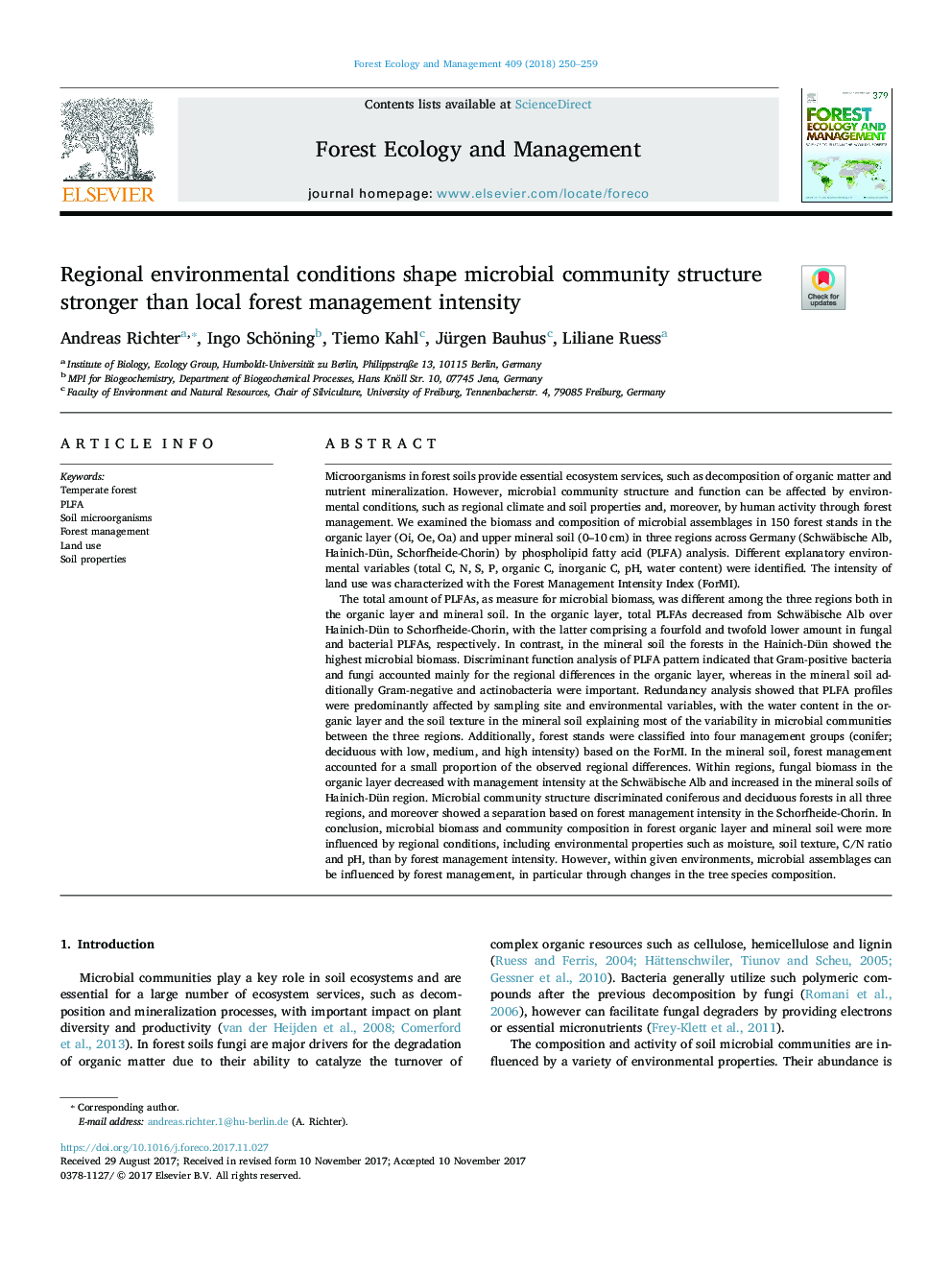| کد مقاله | کد نشریه | سال انتشار | مقاله انگلیسی | نسخه تمام متن |
|---|---|---|---|---|
| 6541892 | 1421349 | 2018 | 10 صفحه PDF | دانلود رایگان |
عنوان انگلیسی مقاله ISI
Regional environmental conditions shape microbial community structure stronger than local forest management intensity
ترجمه فارسی عنوان
محیط زیست منطقه ای شکل ساختار جامعه میکروبی قوی تر از شدت مدیریت محلی جنگل
دانلود مقاله + سفارش ترجمه
دانلود مقاله ISI انگلیسی
رایگان برای ایرانیان
کلمات کلیدی
موضوعات مرتبط
علوم زیستی و بیوفناوری
علوم کشاورزی و بیولوژیک
بوم شناسی، تکامل، رفتار و سامانه شناسی
چکیده انگلیسی
The total amount of PLFAs, as measure for microbial biomass, was different among the three regions both in the organic layer and mineral soil. In the organic layer, total PLFAs decreased from Schwäbische Alb over Hainich-Dün to Schorfheide-Chorin, with the latter comprising a fourfold and twofold lower amount in fungal and bacterial PLFAs, respectively. In contrast, in the mineral soil the forests in the Hainich-Dün showed the highest microbial biomass. Discriminant function analysis of PLFA pattern indicated that Gram-positive bacteria and fungi accounted mainly for the regional differences in the organic layer, whereas in the mineral soil additionally Gram-negative and actinobacteria were important. Redundancy analysis showed that PLFA profiles were predominantly affected by sampling site and environmental variables, with the water content in the organic layer and the soil texture in the mineral soil explaining most of the variability in microbial communities between the three regions. Additionally, forest stands were classified into four management groups (conifer; deciduous with low, medium, and high intensity) based on the ForMI. In the mineral soil, forest management accounted for a small proportion of the observed regional differences. Within regions, fungal biomass in the organic layer decreased with management intensity at the Schwäbische Alb and increased in the mineral soils of Hainich-Dün region. Microbial community structure discriminated coniferous and deciduous forests in all three regions, and moreover showed a separation based on forest management intensity in the Schorfheide-Chorin. In conclusion, microbial biomass and community composition in forest organic layer and mineral soil were more influenced by regional conditions, including environmental properties such as moisture, soil texture, C/N ratio and pH, than by forest management intensity. However, within given environments, microbial assemblages can be influenced by forest management, in particular through changes in the tree species composition.
ناشر
Database: Elsevier - ScienceDirect (ساینس دایرکت)
Journal: Forest Ecology and Management - Volume 409, 1 February 2018, Pages 250-259
Journal: Forest Ecology and Management - Volume 409, 1 February 2018, Pages 250-259
نویسندگان
Andreas Richter, Ingo Schöning, Tiemo Kahl, Jürgen Bauhus, Liliane Ruess,
